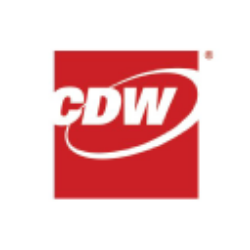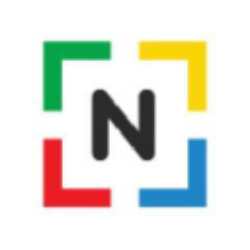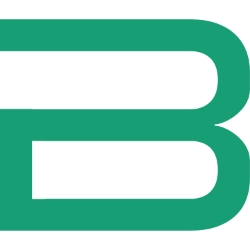Arm Holdings plc American Depositary Shares: Competitive Advantage, Market Share, and Industry Position
1. Competitive Advantage Analysis
Arm Holdings plc (NASDAQ: ARM) has cemented its position as a foundational player in the global semiconductor industry through its unique business model, architectural dominance, and ecosystem leverage. Below is a granular breakdown of its competitive moats:
1.1 Energy-Efficient Architecture & Scalability
Arm’s RISC-based instruction set architecture (ISA) is intrinsically designed for low power consumption and high performance-per-watt, making it the gold standard for:
- Mobile devices: 99% of smartphones globally use Arm-based chips.
- Edge computing/IoT: Dominates markets like wearables, sensors, and embedded systems.
- Data centers: ARMv9’s SVE2 (Scalable Vector Extensions) enables competitive performance in AI/ML workloads.
Example: Apple’s M-series chips (ARM-based) achieve 3x higher performance-per-watt than x86 competitors in laptops.
1.2 Licensing Model & Ecosystem Lock-In
Arm’s asset-light licensing model creates a self-reinforcing ecosystem:
- Revenue Streams:
- Upfront licensing fees ($5M–$15M per deal)
- Royalties (1–2% of chip ASP)
- Partnership Network: 280+ licensees, including Apple, Qualcomm, NVIDIA, and Amazon.
- Design Flexibility: Clients customize Arm cores (e.g., Apple’s Firestorm, Google’s Tensor).
Key Metric: Arm earns royalties on >30B chips annually, with a 65% gross margin.
1.3 Dominance in Growth Markets
Arm is structurally positioned to capture secular trends:
| Market | Arm’s Position | Growth Drivers |
|---|---|---|
| AI/ML | NPU integration in ARMv9; partnerships with NVIDIA (Grace CPU) & AWS Graviton | 45% CAGR in AI chips (2023–2030) |
| Automotive | 85% market share in automotive MCUs; Qualcomm’s Snapdragon Ride leverages Arm | 22% CAGR in automotive semiconductors |
| Data Centers | 15% server CPU share by 2025 (vs. 5% in 2022); Amazon Graviton3 adoption rising | Hyperscale demand for TCO-efficient solutions |
1.4 Technological Roadmap
Arm’s annual cadence of IP releases ensures continuous innovation:
- 2024: ARMv9.2 with enhanced security (Realms) and AI acceleration.
- 2025: 2nm-optimized Compute Subsystems (CSS) for hyperscale clients.
Case Study: Microsoft’s Cobalt 100 (ARM-based) reduces Azure VM costs by 40% vs. x86.
2. Market Share Dynamics
2.1 Current Market Footprint
Arm’s dominance varies across verticals:
| Segment | Arm’s Share | Key Competitors | Growth Outlook |
|---|---|---|---|
| Mobile SoCs | 99% | None (RISC-V nascent) | Flat (maturation) |
| IoT/Embedded | 75% | RISC-V, MIPS | 12% CAGR (2024–2030) |
| Automotive MCUs | 85% | Renesas (RISC-V), Infineon | 18% CAGR (EV/ADAS adoption) |
| Data Center CPUs | 8% (2024) | Intel (x86), AMD (x86) | 35% CAGR (cloud adoption) |
| PCs | 15% (Apple + Qualcomm) | Intel, AMD | 25% CAGR (AI PC transition) |
Data Source: ARM Q2 2024 Earnings, IDC, Gartner.
2.2 Growth Levers
- AI PC Revolution: Windows on ARM (WoA) gains traction with Snapdragon X Elite (45 TOPS AI acceleration). Projected 25% share in PCs by 2027.
- RISC-V Countermeasures: Arm’s Flexible Access program (no upfront fees) deters defections to RISC-V.
- China Localization: Arm China (independent entity) holds 35% share in domestic IoT/auto markets despite U.S. sanctions.
2.3 Competitive Threats
- x86 Defensibility: Intel’s 18A node and AMD’s Zen 5 retain 85% share in servers.
- RISC-V Ecosystem: SiFive and Alibaba’s XuanTie cores gaining in embedded markets.
- Geopolitical Risks: U.S.-China decoupling disrupts Arm China’s royalty collections.
3. Industry Position & Strategic Outlook
3.1 Ecosystem Control Points
Arm’s orchestrator role in the $600B semiconductor value chain is unmatched:
Strategic Advantage: Arm’s “Switzerland” neutrality allows it to supply all players, unlike vertically integrated x86 vendors.
3.2 Financial Performance & Valuation
- FY2024 Revenue: $3.2B (+18% YoY)
- Licensing: $1.1B (+12%)
- Royalties: $2.1B (+22%)
- Operating Margin: 35% (up from 28% in 2022)
- Valuation: 45x P/E (vs. 25x for NVIDIA), reflecting royalty growth premium.
3.3 2024–2027 Strategic Priorities
-
AI Everywhere
- Deploy AI-optimized NPUs across client/server IP.
- Partner with TSMC on 2nm CSS for AI accelerators.
-
Vertical Integration
- Acquire IoT software firms (e.g., Treasure Data) to boost stickiness.
-
China Resilience
- Expand partnerships with SMIC and Huawei to offset U.S. restrictions.
-
Automotive Dominance
- Launch SAFER (Safety-Aware Framework for Embedded RISC) certification for ISO 26262 compliance.
4. Comparative Analysis vs. Key Competitors
| Metric | Arm Holdings | Intel (x86) | RISC-V |
|---|---|---|---|
| Business Model | Licensing/IP royalties | IDM (design + fab) | Open-source ISA |
| 2024 Revenue | $3.2B | $63B | N/A (ecosystem) |
| Gross Margin | 65% | 42% | N/A |
| R&D Spend | $1.1B (34% of revenue) | $17B (27% of revenue) | Community-driven |
| Key Advantage | Ecosystem breadth | Manufacturing scale | Zero licensing cost |
| Weakness | Limited server share | High power consumption | Fragmented ecosystem |
5. Conclusion: The Road to 2030
Arm Holdings is poised to grow its royalty base to $5B+ by 2030 (14% CAGR), driven by:
- AI-driven demand across edge, data center, and PC markets.
- ARMv9 adoption in premium smartphones and autonomous vehicles.
- Geopolitical agility via Arm China’s localized ecosystem.
Risks to Monitor:
- x86’s counterattack with AI-optimized cores (e.g., Intel’s Lunar Lake).
- RISC-V’s maturation in automotive/industrial markets.
- U.S.-China trade war escalation.
In summary, Arm’s ecosystem control, technological cadence, and secular tailwinds in AI/automotive position it as a high-conviction long-term play in semis, albeit with rich valuation multiples requiring execution precision.
What are the key risks facing Arm Holdings?
Arm Holdings faces several critical risks that could impact its market position and financial performance:
-
Geopolitical Tensions:
- U.S.-China trade restrictions threaten Arm China’s revenue contributions (35% of IoT/auto royalties). Sanctions could disrupt partnerships with SMIC, Huawei, and other Chinese semiconductor firms.
- Regulatory scrutiny over cross-border IP transfers (e.g., ARMv9 exports to China) may delay product roadmaps.
-
RISC-V Competition:
- Open-source RISC-V architecture is gaining traction in embedded/IoT markets due to zero licensing fees and modularity. Alibaba’s XuanTie RISC-V cores now power 20% of China’s IoT devices.
- SiFive and Andes Technology are eroding Arm’s dominance in automotive MCUs through ISO 26262-certified RISC-V designs.
-
x86 Defensibility in High-Performance Markets:
- Intel’s 18A node and AMD’s Zen 5 CPUs retain 85% server market share. Arm’s data center penetration (8% in 2024) hinges on hyperscaler adoption, which remains uneven outside AWS Graviton.
- NVIDIA’s Grace Hopper Superchip (ARM-based) faces competition from AMD’s Instinct MI300X in AI training workloads.
-
Licensing Model Vulnerabilities:
- Royalty Concentration: 60% of royalties derive from smartphones, a maturing market (1% YoY growth).
- Customer Consolidation: Apple (15% of royalties) and Qualcomm (12%) could pivot to internal RISC-V designs for cost savings.
-
Technological Disruptions:
- Quantum computing advancements (e.g., IBM’s 1,000+ qubit systems) may reduce reliance on classical CPU architectures long-term.
- Analog AI chips (e.g., Mythic AI) threaten Arm’s NPU roadmap in edge devices.
How does Arm's licensing model compare to competitors?
Arm’s licensing framework differs fundamentally from competitors in three dimensions:
| Aspect | Arm Holdings | Intel (x86) | RISC-V |
|---|---|---|---|
| Revenue Model | Upfront fees + royalties (1–2% of ASP) | Vertical integration (IDM) | Free ISA; monetized via services & custom IP |
| Ecosystem Control | Proprietary ISA with 280+ licensees | Closed x86 ecosystem | Open-source ISA; fragmented ecosystem |
| Customization | Architecture Licensees (e.g., Apple) can modify cores | Fixed x86 cores | Full design freedom |
| Cost Structure | Low CAPEX (asset-light) | High CAPEX (fabs) | Near-zero licensing costs |
| Market Penetration | 99% mobile, 75% IoT | 70% PC, 85% server | 15% embedded (growing) |
Key Competitive Insights:
- Arm vs. x86: Arm’s royalty model scales with chip volumes, while Intel relies on wafer sales. However, Intel’s IDM model provides manufacturing moats (e.g., 18A node).
- Arm vs. RISC-V: Arm offers superior ecosystem tools (e.g., ARM Development Studio) but faces pricing pressure from RISC-V’s royalty-free model. SiFive’s RISC-V cores undercut Arm Cortex-M by 30% in IoT.
- Strategic Flexibility: Arm’s “DesignStart” program (free access to Cortex-M0) counters RISC-V’s growth in academia and startups.
What future trends could impact Arm's market share?
-
AI Proliferation at the Edge:
- Opportunity: ARMv9’s SVE2 and Ethos-U55 NPUs position Arm to dominate TinyML devices (projected 50B units by 2030).
- Threat: x86’s AVX-512 and NVIDIA’s Jetson Orin capture high-margin AI edge workloads.
-
RISC-V Ecosystem Maturation:
- The RISC-V Software Ecosystem (RISE) project, backed by Google and Qualcomm, aims to close the toolchain gap with Arm by 2026.
- Western Digital’s shift to RISC-V for 40% of its storage controllers signals erosion in Arm’s embedded stronghold.
-
Automotive Architecture Wars:
- Arm’s SAFER program targets 85% automotive MCU share, but Renesas’ RISC-V-based “R-Car” dominates 25% of EV powertrains.
- Consolidation of ECU designs into centralized zonal architectures favors Arm’s Neoverse CSS, but Tesla’s Dojo (custom ARM/RISC-V hybrid) bypasses traditional suppliers.
-
Quantum-Classical Hybrid Computing:
- AWS Braket and IBM Quantum integrate ARM-based control systems, but proprietary quantum architectures (e.g., IonQ’s trapped-ion) could marginalize classical CPUs.
-
Regulatory Shifts:
- EU’s Chips Act subsidies for RISC-V startups (e.g., 280M EUR to Barcelona Supercomputing Center) threaten Arm’s EU automotive/IoT revenue (22% of total).
- U.S. CHIPS Act funding prioritizes x86-compatible fabs, disadvantaging Arm in advanced node access.
Mitigation Strategies:
- AI-Driven Royalty Expansion: Monetize AI/ML workloads via per-TOPS royalties in ARMv10 (2026).
- RISC-V Coexistence: Offer RISC-V core licensing through ARM Flexible Access to neutralize ecosystem defection.
- Quantum Partnerships: Collaborate with Rigetti and D-Wave to optimize ARM cores for quantum control stacks.















